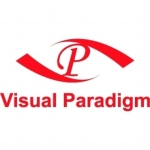What is our primary use case?
Currently, we are just using the business model's architecture and MEGA's architecture.
What is most valuable?
The IT portfolio is the most useful feature. The IT portfolio management is becoming more advanced and more easy for the IT management to generate revenue, to see the gaps within management with the portfolio management application. However, in the end, we didn't use it. I could not convince our management to implement the solution, even though I thought it seemed interesting.
What needs improvement?
The solution is really expensive. I sent this same feedback six months ago. I told them they have a lot of opportunities in the Middle East to fill the small and medium businesses niche, even using the cloud. But, the product is very, very costly.
They do tend to push people to their professional services, instead of helping the customers with their problems. I understand this is their business. At the same time, however, they need to work on fact sheets or offer some program to help the customers who want to implement it themselves and to make it run properly in their environment. The company seems only interested in selling and not customer satisfaction. I'm not asking for anything for free, I'm just asking them to invest a bit in helping their customers implement their technology correctly.
The documentation needs to be more clearly explained. The documentation gives the customers an indication that everything is available, but when they buy the module, they discover that the pieces that they are looking for are not available in the current module, or that they are available in a different module. Then, the user needs to buy a different module or use professional services even though they thought these items were included. It's confusing.
For how long have I used the solution?
I've been using the solution for one year, however the implementation was three years ago.
What do I think about the stability of the solution?
I can't speak for it on a large-scale since we only used it on a smaller scale, but we didn't face a lot of issues. What problems we did have, the security team dealt with easily, so we didn't have many issues at all. It's good.
How are customer service and technical support?
Technical support is very good. However, they are limited. They cannot support me further because we actually need their professional services, which I cannot access at this point. You need to pay for it. Sometimes, if I try to make some customization they inform me that it's actually a professional service and they redirect me to that community instead. The community website is not mature. It's okay, but it doesn't offer the help I need. If it is a small customization for a POC, they should still be able to help without charging the company. I understand that some customizations need professional services, but these customizations help you sustain your technology within the environment, and the company should want to help ensure the customer is satisfied with the tech.
Which solution did I use previously and why did I switch?
Previously, I just used Excel and Visio.
How was the initial setup?
The initial setup was straightforward. With configuration, customizing or prepping the data and deployment, it took about one year to set up. We only needed two people to deploy and maintain the solution: one business architect and someone who specializes in customization and operations.
What about the implementation team?
Since we set up the solution, then stopped working on it, then started again, we had to reconfigure everything. I created a new environment and I installed the new version and I migrated the old version over. The solution's technical support assisted with the migration when we re-started using the solution over the past year.
What's my experience with pricing, setup cost, and licensing?
The solution is very expensive, and the company constantly directs users to their professional services, which also costs money.
What other advice do I have?
We don't use the solution on a large scale. We mainly just use it in the IT department. We're using the on-premises deployment solution.
Originally, about two years ago, we set up the solution, then we froze work on it. Recently we started it up again, but it needed to re-configure the solution because our business requirements had changed.
MEGA typically exceeds most of the needs of a client in terms of what they offer.
As for advice to others considering using this solution, I'd say this: you need to study the modules and to match them to your business requirements before you begin so you don't buy something you don't need or won't use. Make sure you know what you need before entering into an agreement.
I would rate the solution at eight out of ten but they need to enhance their way of filling the modules because as of right now, it's not ideal for the customer.
Disclosure: My company does not have a business relationship with this vendor other than being a customer.

















